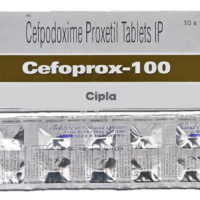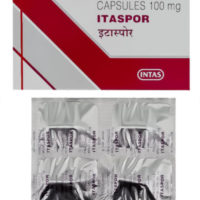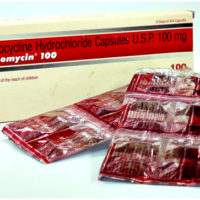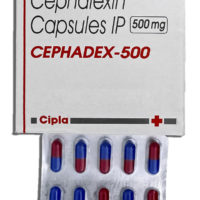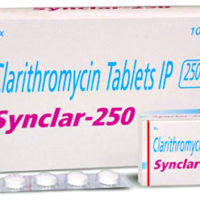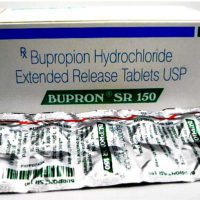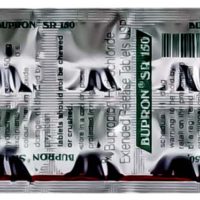Usual Adult Dose for Tonsillitis/Pharyngitis
Immediate-release: 250 mg orally every 12 hours for 10 days
Comments:
-The drug of choice for treatment and prevention of streptococcal infections and prophylaxis of rheumatic fever is IM or oral penicillin.
-In general, this drug effectively eradicates Streptococcus pyogenes from the nasopharynx; efficacy in the subsequent prevention of rheumatic fever has not been established.
Use: For the treatment of pharyngitis/tonsillitis due to S pyogenes
Usual Adult Dose for Sinusitis
Immediate-release: 500 mg orally every 12 hours for 14 days
Extended-release: 1000 mg orally every 24 hours for 14 days
Uses: For the treatment of acute maxillary sinusitis due to Haemophilus influenzae, Moraxella catarrhalis, or S pneumoniae
Usual Adult Dose for Bronchitis
Immediate-release:
-Due to H influenzae: 500 mg orally every 12 hours for 7 to 14 days
-Due to H parainfluenzae: 500 mg orally every 12 hours for 7 days
-Due to M catarrhalis or S pneumoniae: 250 mg orally every 12 hours for 7 to 14 days
Extended-release: 1000 mg orally every 24 hours for 7 days
Uses: For the treatment of acute bacterial exacerbation of chronic bronchitis due to H influenzae, H parainfluenzae, M catarrhalis, or S pneumoniae
Usual Adult Dose for Pneumonia
Immediate-release:
-Due to H influenzae: 250 mg orally every 12 hours for 7 days
-Due to S pneumoniae or Chlamydophila pneumoniae: 250 mg orally every 12 hours for 7 to 14 days
Extended-release: 1000 mg orally every 24 hours for 7 days
Uses: For the treatment of community-acquired pneumonia due to:
-Immediate-release: H influenzae, S pneumoniae, or C pneumoniae (TWAR)
-Extended-release: H influenzae, H parainfluenzae, M catarrhalis, S pneumoniae, C pneumoniae (TWAR)
Usual Adult Dose for Mycoplasma Pneumonia
Immediate-release: 250 mg orally every 12 hours for 7 to 14 days
Extended-release: 1000 mg orally every 24 hours for 7 days
Use: For the treatment of community-acquired pneumonia due to Mycoplasma pneumoniae
Usual Adult Dose for Skin and Structure Infection
Immediate-release: 250 mg orally every 12 hours for 7 to 14 days
Comments:
-Abscesses usually require surgical drainage.
Uses: For the treatment of uncomplicated skin and skin structure infections due to Staphylococcus aureus or S pyogenes
Usual Adult Dose for Helicobacter pylori Infection
Immediate-release:
Triple therapy:
-In combination with lansoprazole and amoxicillin: Clarithromycin 500 mg orally every 12 hours for 10 to 14 days
-In combination with omeprazole and amoxicillin: Clarithromycin 500 mg orally every 12 hours for 10 days
Dual therapy:
-In combination with omeprazole: Clarithromycin 500 mg orally every 8 hours for 14 days
-In combination with ranitidine bismuth citrate: Clarithromycin 500 mg orally every 8 to 12 hours for 14 days
Comments:
-Helicobacter pylori eradication shown to reduce the risk of duodenal ulcer recurrence
-Regimens with this drug as the only antimicrobial agent are more likely to be associated with clarithromycin resistance in patients who fail therapy.
-Regimens containing this drug should not be used in patients with known or suspected clarithromycin-resistant isolates; efficacy of therapy is reduced.
-Susceptibility testing is recommended in patients who fail therapy; if resistance to this drug is established, a non-clarithromycin-containing regimen is recommended.
-The manufacturer product information for the other drugs indicated in combination with clarithromycin should be consulted.
Uses:
-Triple therapy: In combination with amoxicillin and (lansoprazole or omeprazole), for the treatment of patients with H pylori infection and duodenal ulcer disease (active or 5-year history of duodenal ulcer) to eradicate H pylori
-Dual therapy: In combination with omeprazole or ranitidine bismuth citrate, for the treatment of patients with active duodenal ulcer associated with H pylori infection
Usual Adult Dose for Mycobacterium avium-intracellulare – Prophylaxis
Immediate-release: 500 mg orally twice a day
Use: For the prevention of disseminated Mycobacterium avium complex (MAC) disease in patients with advanced HIV infection
US CDC, National Institutes of Health (NIH), and HIV Medicine Association of the Infectious Diseases Society of America (HIVMA/IDSA) Recommendations for HIV-infected Patients:
-Primary prevention of disseminated MAC disease: 500 mg orally twice a day
-Chronic maintenance therapy (secondary prophylaxis) for disseminated MAC disease: 500 mg orally twice a day
Comments:
-Primary prophylaxis against disseminated MAC disease recommended for patients with CD4 count less than 50 cells/mm3 (after active disseminated MAC disease has been ruled out based on clinical assessment).
-This drug is a preferred prophylactic agent for primary prevention of disseminated MAC disease (except during pregnancy).
-The combination of this drug and rifabutin should not be used for primary MAC prophylaxis; not more effective than this drug alone.
-Primary MAC prophylaxis should be discontinued in patients responding to antiretroviral therapy (ART) with increase in CD4 count to greater than 100 cells/mm3 for at least 3 months; should restart if CD4 count declines to less than 50 cells/mm3.
-This drug should be used with ethambutol for chronic maintenance therapy; same regimen as for treatment.
-Patients with disseminated MAC disease should continue chronic maintenance therapy (secondary prophylaxis) unless immune reconstitution occurs due to ART.
-Chronic maintenance therapy may be stopped in patients at low risk of MAC recurrence; such patients have completed at least 12 months of MAC therapy, have no signs/symptoms of MAC disease, and have an increase in CD4 count to greater than 100 cells/mm3 for more than 6 months in response to ART; should restart if CD4 count declines to less than 100 cells/mm3.
Usual Adult Dose for Mycobacterium avium-intracellulare – Treatment
Immediate-release: 500 mg orally twice a day
Comments:
-Recommended as the primary agent for the treatment of disseminated infection due to MAC
-This drug should be used in combination with other antimycobacterial agents that have shown in vitro activity against MAC or clinical benefit in MAC treatment.
-Therapy should continue if clinical response is observed; can discontinue this drug when patient considered at low risk of disseminated infection.
Uses: For the treatment of disseminated mycobacterial infections due to M avium or M intracellulare
US CDC, NIH, and HIVMA/IDSA Recommendations for HIV-infected Patients:
-Treatment of disseminated MAC disease: 500 mg orally twice a day
Comments:
-This drug should be used with ethambutol.
-Combination therapy with at least 2 antimycobacterial drugs is recommended for initial treatment of MAC disease to prevent/delay resistance development.
-This drug is the preferred first agent (except during pregnancy); ethambutol is the recommended second agent.
-Addition of a third or fourth agent should be considered for patients with CD4 count less than 50 cells/mm3, high mycobacterial loads, or when effective ART is absent; some experts recommend rifabutin as a third agent.
-MAC isolates should be tested for susceptibility to this drug in all patients.
-Patients with disseminated MAC disease should continue chronic maintenance therapy (secondary prophylaxis) unless immune reconstitution occurs due to ART.
Usual Adult Dose for Bacterial Endocarditis Prophylaxis
American Heart Association (AHA) recommendations:
Immediate-release: 500 mg orally as a single dose 30 to 60 minutes before procedure
Comments:
-Recommended for patients allergic to penicillins
Usual Adult Dose for Legionella Pneumonia
Some experts recommend:
Immediate-release: 500 mg orally every 12 hours
Duration of therapy:
-For mild to moderate infections in immunocompetent patients: 10 days
-To prevent relapse, especially in patients with more severe infections or with underlying comorbidity or immunodeficiency: 3 weeks may be necessary
Comments:
-Recommended for Legionnaires’ disease
Usual Adult Dose for Pertussis Prophylaxis
US CDC recommendations:
Immediate-release: 500 mg orally every 12 hours for 7 days
Comments:
-Recommended for treatment and postexposure prophylaxis
-Macrolides are preferred agents for the treatment of pertussis.
Usual Adult Dose for Pertussis
US CDC recommendations:
Immediate-release: 500 mg orally every 12 hours for 7 days
Comments:
-Recommended for treatment and postexposure prophylaxis
-Macrolides are preferred agents for the treatment of pertussis.
Usual Pediatric Dose for Tonsillitis/Pharyngitis
Immediate-release:
6 months or older: 7.5 mg/kg orally every 12 hours for 10 days
Maximum dose: 500 mg/dose
Uses: For the treatment of pharyngitis/tonsillitis due to S pyogenes
Usual Pediatric Dose for Sinusitis
Immediate-release:
6 months or older: 7.5 mg/kg orally every 12 hours for 10 days
Maximum dose: 500 mg/dose
Uses: For the treatment of acute maxillary sinusitis due to H influenzae, M catarrhalis, or S pneumoniae
Usual Pediatric Dose for Mycoplasma Pneumonia
Immediate-release:
6 months or older: 7.5 mg/kg orally every 12 hours for 10 days
Maximum dose: 500 mg/dose
Uses: For the treatment of community-acquired pneumonia due to M pneumoniae, S pneumoniae, or C pneumoniae (TWAR)
Usual Pediatric Dose for Pneumonia
Immediate-release:
6 months or older: 7.5 mg/kg orally every 12 hours for 10 days
Maximum dose: 500 mg/dose
Uses: For the treatment of community-acquired pneumonia due to M pneumoniae, S pneumoniae, or C pneumoniae (TWAR)
Usual Pediatric Dose for Otitis Media
Immediate-release:
6 months or older: 7.5 mg/kg orally every 12 hours for 10 days
Maximum dose: 500 mg/dose
Uses: For the treatment of acute otitis media due to H influenzae, M catarrhalis, or S pneumoniae
Usual Pediatric Dose for Skin and Structure Infection
Immediate-release:
6 months or older: 7.5 mg/kg orally every 12 hours for 10 days
Maximum dose: 500 mg/dose
Comments:
-Abscesses usually require surgical drainage.
Uses: For the treatment of uncomplicated skin and skin structure infections due to S aureus or S pyogenes
Usual Pediatric Dose for Mycobacterium avium-intracellulare – Prophylaxis
Immediate-release:
20 months or older: 7.5 mg/kg orally twice a day
Maximum dose: 500 mg/dose
Use: For the prevention of disseminated MAC disease in patients with advanced HIV infection
US CDC, NIH, HIVMA/IDSA, Pediatric Infectious Diseases Society (PIDS), and American Academy of Pediatrics (AAP) Recommendations for HIV-exposed and HIV-infected Children:
-Primary prevention of MAC infections: 7.5 mg/kg orally twice a day
-Chronic suppressive therapy for MAC infections: 7.5 mg/kg orally twice a day
Maximum dose: 500 mg/dose
